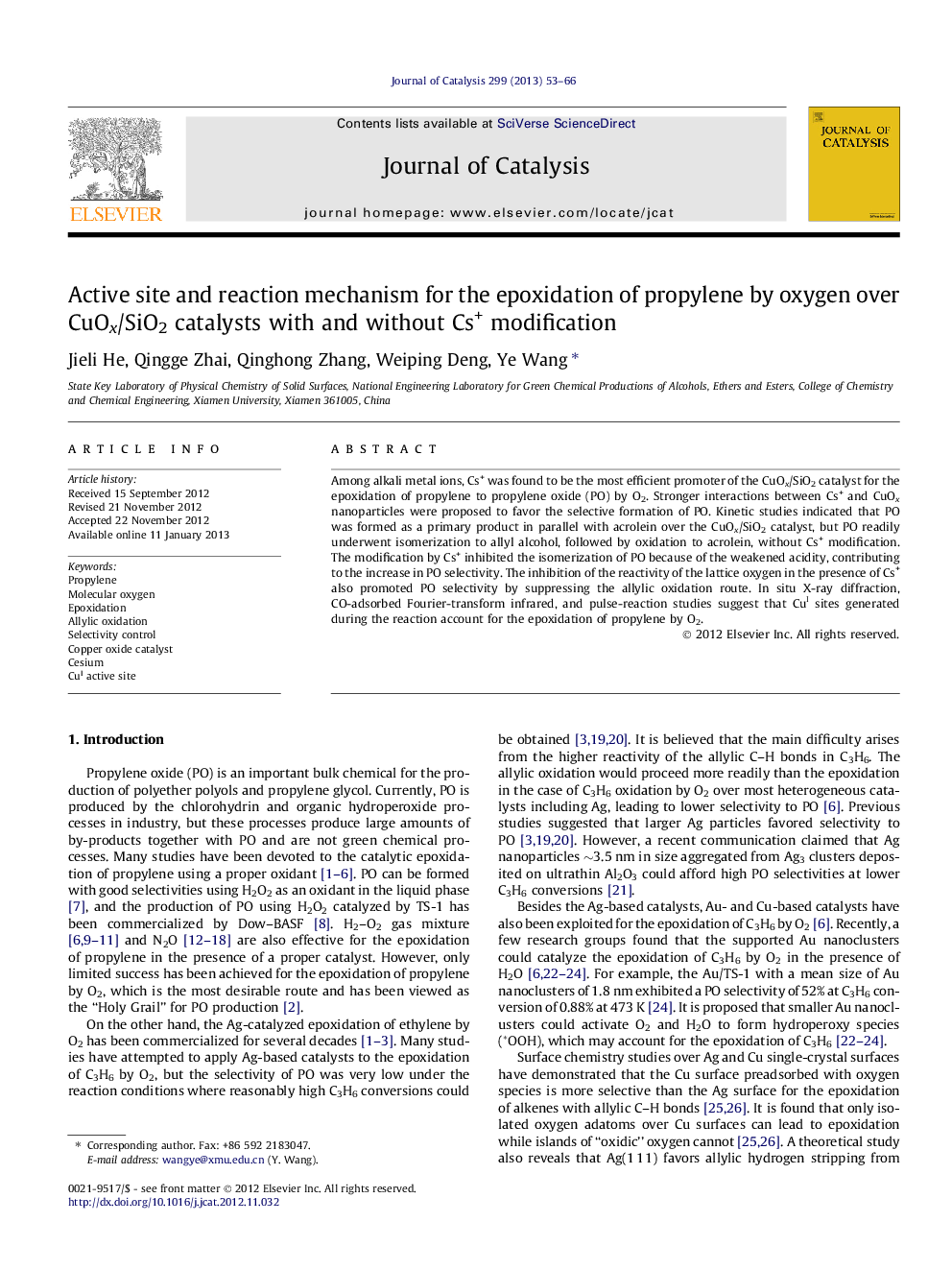| کد مقاله | کد نشریه | سال انتشار | مقاله انگلیسی | نسخه تمام متن |
|---|---|---|---|---|
| 61404 | 47581 | 2013 | 14 صفحه PDF | دانلود رایگان |

Among alkali metal ions, Cs+ was found to be the most efficient promoter of the CuOx/SiO2 catalyst for the epoxidation of propylene to propylene oxide (PO) by O2. Stronger interactions between Cs+ and CuOx nanoparticles were proposed to favor the selective formation of PO. Kinetic studies indicated that PO was formed as a primary product in parallel with acrolein over the CuOx/SiO2 catalyst, but PO readily underwent isomerization to allyl alcohol, followed by oxidation to acrolein, without Cs+ modification. The modification by Cs+ inhibited the isomerization of PO because of the weakened acidity, contributing to the increase in PO selectivity. The inhibition of the reactivity of the lattice oxygen in the presence of Cs+ also promoted PO selectivity by suppressing the allylic oxidation route. In situ X-ray diffraction, CO-adsorbed Fourier-transform infrared, and pulse-reaction studies suggest that CuI sites generated during the reaction account for the epoxidation of propylene by O2.
CuI generated over the CuOx/SiO2 catalyst with and without Cs+ modification during the reaction accounts for the formation of propylene oxide, while the lattice oxygen is responsible for acrolein formation.Figure optionsDownload high-quality image (57 K)Download as PowerPoint slideHighlights
► The modification of CuOx/SiO2 catalyst by Cs+ promotes PO formation.
► PO is formed as a primary product in parallel with acrolein over CuOx/SiO2 catalyst.
► Modification by Cs+ inhibits the consecutive conversion of PO by decreasing acidity.
► Cs+ decreases the reactivity of lattice oxygen responsible for allylic oxidation.
► CuI generated during the reaction is involved in propylene epoxidation.
Journal: Journal of Catalysis - Volume 299, March 2013, Pages 53–66